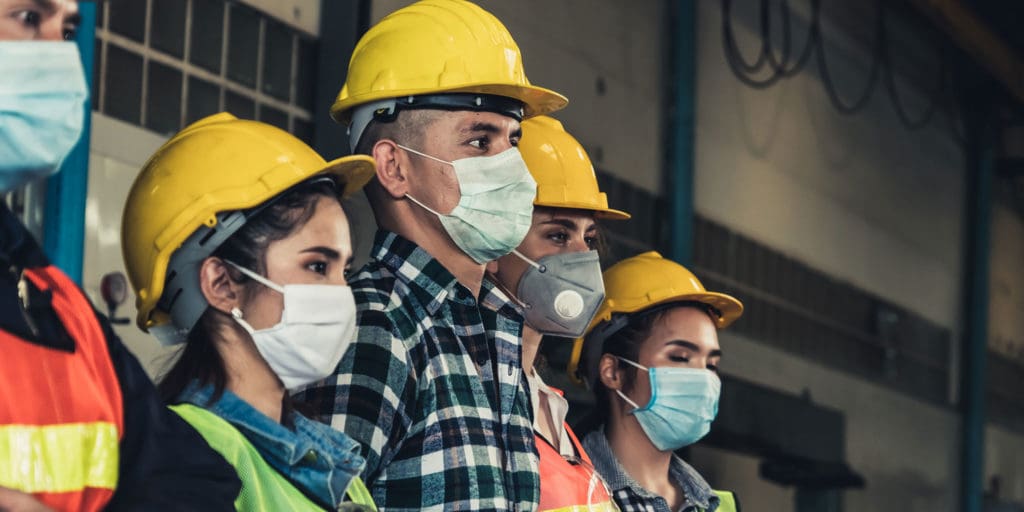The COVID-19 pandemic has taught us that social distancing is the most effective way to stay healthy. Businesses have closed for most employees but not for essential workers. What happens if you are one of those essential workers but also have a chronic pain condition? Or your state is beginning to reopen, and virus cases keep going up? Here is what you can do to protect your job during Covid-19 pandemic.
These are especially high-risk situations for chronic pain sufferers, who are particularly vulnerable to infectious diseases.
So how do you balance safeguarding your health with the need to keep your job? Read on for suggestions that may help.
Protect Your Job During COVID-19 – Communication Is Critical
Be sure they know the reason why you may need to abstain from working or work remotely right now. If you don’t have this conversation with your supervisor, they may draw the wrong conclusions when you unexpectedly need time off.
You will need mutual trust to make an alternative arrangement work.
A Stressful Workplace and Chronic Pain
One suggestion is to consider approaching your boss about working from home.
COVID-19 Has Redefined the Workplace
“If our employees are in a role and situation that enables them to work from home and they want to continue to do so forever, we will make that happen,” -Twitter’s vice president of people, Jennifer Christie
What’s more, some high-profile employers, such as Facebook, Twitter, Square, and Shopify, have found that work-from-home has worked surprisingly well for them. Some have stated that they plan to continue this practice for at least some employees post-COVID.
In this environment, chronic pain sufferers may have an easier time asking an employer for schedule flexibility. Is your job one that makes it possible for you to work from home at least part of the time? Or one that will allow you to take a day off this week and work extra hours the next, either at home or on-site?
Maybe earning comp time by working longer days when you can work would allow you to take time off when you need it.
A recent study showed that when employees with chronic pain return to work after an absence, employers’ main concerns are attitude issues and the ability of employees to fulfil job requirements. Be ready to propose solutions to those concerns, and your supervisor just might okay it.
Employers’ minds may never be more open to alternative job options than they are right now, so don’t be afraid to take this chance.
Protect Your Job During COVID-19 – Know Your Rights
If your employer is not willing to work with you, or if working from home is not possible for your job, know your options. There are several federal programs in place that protect disabled workers; one of them may apply to you.
- Under the American with Disabilities Act (ADA), employers must make reasonable accommodations for workers with disabilities. You may qualify for additional time off or sick leave beyond your company’s usual policies.
- The Family Medical Leave Act (FMLA) allows for up to 12 weeks off (unpaid) for medical or family emergencies.
- If you work for a company with fewer than 500 employees and you become ill with COVID-19 (or are caring for someone who has), you may qualify for the Families First Coronavirus Response Act (FFCRA). This act provides for up to 80 hours of emergency sick leave.
- You may also qualify for protection through your state labor department. Visit the Department of Labor for more information.
- If you are unable to work at all due to illness or disability, you have two options:
- If you have short- or long-term disability insurance through your employer, you should speak to your human resources department about how to access it. Know that your employer is not required to keep your job open for you if you use this, but some will.
- You can apply for Social Security Disability Insurance. To qualify for SSDI, you must prove that you are unable to do any type of paid work. The benefits you are eligible for will be based on your lifetime earnings. The monthly benefit you receive will be modest. But the good news is that after you have received disability insurance for 2 years, you become eligible for Medicare coverage.
Safety Issues
Because chronic pain sufferers are more vulnerable to the virus, safety precautions are especially critical for you. If and when you do return to work, be sure that your employer is following CDC guidelines.
At a bare minimum, you should expect your employer to:
- Clean and disinfect the work-spaces often.
- Conduct daily health checks.
- Encourage all employees and customers to wear face coverings.
- Put social distancing practices in place.
- Provide barriers when social distancing isn’t possible.
- Follow any federal or state restrictions on how many people are allowed on-site at one time.
Guidelines are stricter for higher-risk workplaces such as healthcare and retail settings. For more information about regulations for average-risk and high-risk employees, visit the Occupational Safety and Health Administration (OSHA) COVID-19 web page.
Do you still have questions about being employed with chronic pain?
Comment below or email us at info@painresource.com with your suggestions for future articles.
Are you on Facebook?
Join our online community by clicking here.
